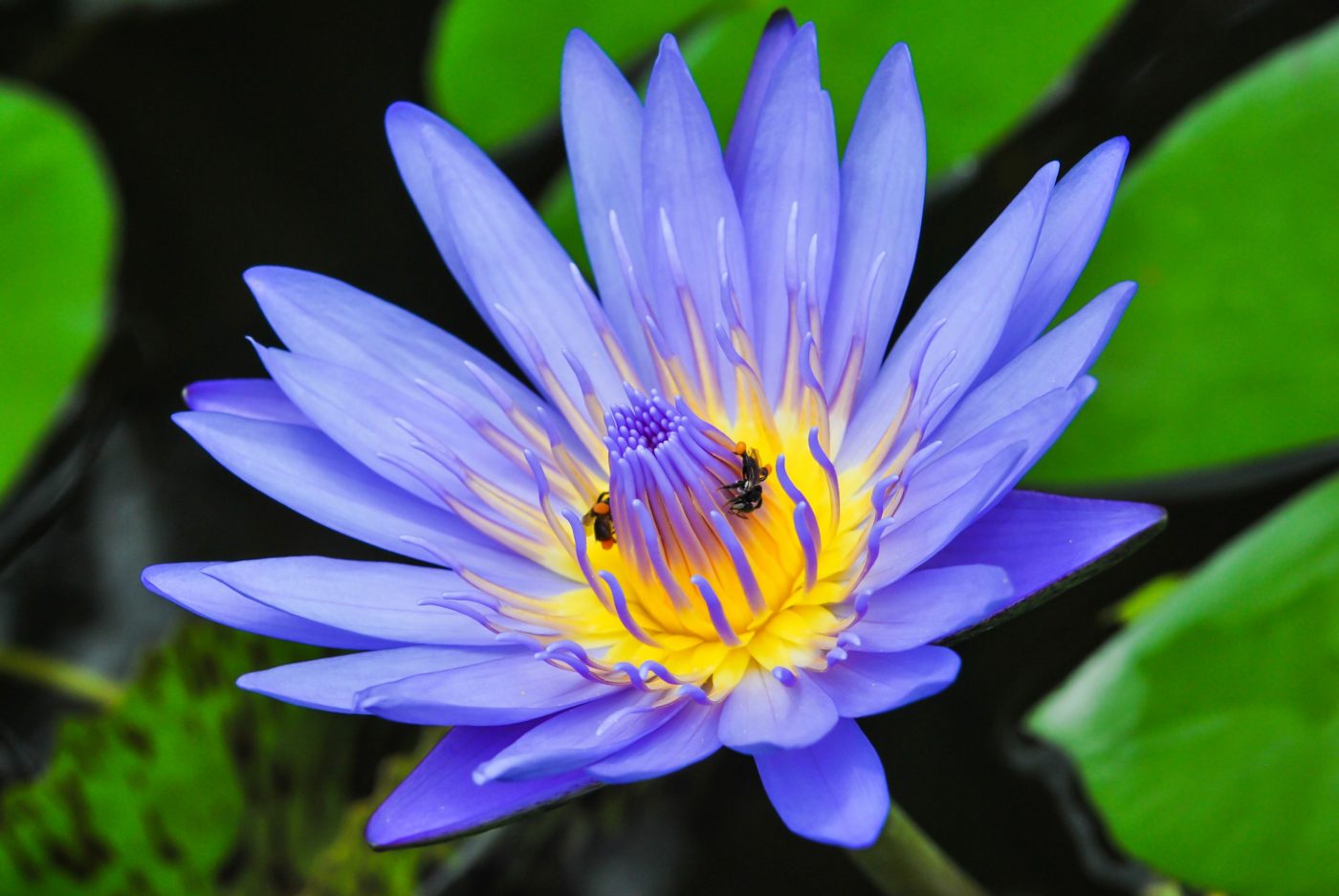Botanicals, Uncategorized
What Is Blue Lotus Flower Used For?
Nymphaea caerulea, also known as the Blue Lotus flower or blue water lily, became popular among ancient Egyptians. It’s been used as traditional medicine, and it also had a place in spiritual rituals in ancient Egypt, where people regarded it as an aphrodisiac with psychedelic properties. The Blue Lotus flower isn’t just in old Egyptian paintings anymore, as it’s becoming more popular throughout the world.
History of the Blue Lotus
In ancient paintings, the Blue Lotus is often shown in conjunction with wine. Some historians take this to mean that Egyptians may have made alcoholic drinks with this flower. Beyond its prevalent depiction in art, archaeologists have even found it in ancient Egyptian tombs. This plant was an important part of the culture in Ancient Egypt, and it was even symbolic of the union between Upper Egypt and Lower Egypt.
The flower opens its petals in the morning as the sun rises, exposing a golden center. At night, the flower closes. Because of this unique characteristic, Egyptians considered the Blue Lotus to be important to the sun and their sun gods. In the mythology, one such sun god, Nefertem, was believed to be a lotus flower when the world was first created. Nefertem was also the god of beauty and healing, and he brought the Blue Lotus flower to Ra to heal signs of aging in his body.
It’s widely accepted that Egyptians historically used Nymphaea caerulea in their spiritual rituals, but it may have also been used recreationally. It could have had an important place in society as one of the first party substances. In other words, Egyptians may have been interested in seeking psychedelic effects from Blue Lotus for both spiritual experiences and when they wanted to have a party.
The Science of the Blue Lotus Flower
Like some other plants, including kratom, people usually buy Blue Lotus because of its alkaloids. Many different kinds of alkaloids are found naturally in plants, including the Nymphaea caerulea flower. These natural organic compounds contain nitrogen, and they must produce a physiological effect on human beings or other animals to be considered alkaloids.
Nuciferine and aporphine are the two primary alkaloids that have helped make so many people interested in kratom throughout time. Nuciferine is believed to act as a dopamine receptor blocker, and it can also be found in other plants such as Nelumbo nucifera, which is also known as the Sacred Lotus or Blue Lily. This may be part of the reason so many people confuse the Blue Lotus with the Blue Lily– we’ll go into greater detail about the differences between these two plants shortly.
Aporphine is considered to be the most desirable alkaloid in the Blue Lotus flower and Blue Lotus extract. It’s believed to be a dopamine agonist, which means it activates dopamine receptors. This effect is considerably different from the impact of nuciferine. People who like to buy the Blue Lotus flower often do so because they believe the alkaloid aporphine leads to happy, uplifting, and euphoric experiences.
Why Do People Buy Blue Lotus Flower?
We’re still waiting for scientists to study the effects of Nymphaea caerulea in greater detail. The benefits of Blue Lotus haven’t been confirmed by extensive studies yet, but some people report experiencing benefits from this flower. The alkaloid aporphine is said by some to make people feel calm and happy. Some people also report that they feel that their state of consciousness has been slightly altered after they enjoy Blue Lotus extract. Scientists have reported that some people buy Blue Lotus to fall asleep, address Parkinson’s disease, or its psychoactive qualities.
Even beyond the alkaloids, there are other ingredients in this plant that some people find desirable. Some people say this plant may reduce blood sugar levels and cholesterol levels. For this reason, some people consume the leaves from this flower on their own, make them into a tea, or even buy Blue Lotus extract online. Additionally, this plant contains vitamin B and L-carotene, which many people consider to be important.
Vitamin B is believed to improve mood and inspire a sense of general wellness. Many people even take vitamin B to get a boost instead of drinking coffee or other caffeinated beverages. Finally, people also buy Blue Lotus extract to be a source of vitamin L-carotene. This vitamin is believed to help process food, which may help slow weight gain.
How Is Blue Lotus Grown?
This flower has been classified as endangered, though it still grows naturally in some parts of the world. Historically, it grew in abundance along the Nile river in Egypt, but now it grows naturally in other parts of the world. Asian countries like Thailand have also found that their climates are naturally suited to growing the Blue Lotus flower. As the plant becomes more popular in recent years, we’ve also seen a rise in people intentionally cultivating Nymphaea caerulea.
Traditionally, Blue Lotus has been grown from its rhizomes from the plant’s stem and roots. In more recent years, horticulture experts have also found ways to grow this plant from the seed. Growing this plant from seeds makes things significantly easier for people who want to grow it in various environments.
What’s the Difference Between Blue Lotus and Blue Lily?
Some people have been confusing Blue Lotus (Nymphaea caerulea) with Blue Lily (Nymphaea stellata) for a long time. The name Blue Lily is very similar to the name Blue Lotus, which may have helped make the confusion worse. In some accounts, people have even used these two names to mean the same thing. In some parts of the world, like India, the Blue Lotus is commonly called the Blue Lily, adding to the confusion.
Even some online herbal retailers seem confused about the differences between these two plants, but they aren’t the same. Even though they contain the alkaloid nuciferine, they also have their own unique qualities that make them different. People who are familiar with both plants do report other effects from their experiences.
Blue Lotus Extract
Today, most people buy Blue Lotus extract powder instead of transporting the flower while it’s fresh. When you buy Nymphaea caerulea from a reliable vendor, you’ll still be getting pure, 100% Blue Lotus. Here at In Sense Botanicals, we source ours from Indonesia, where we have excellent relationships with the best farmers and vendors. Traditionally, Blue Lotus extract is mixed with hot water to create a tea or mixed with wine to create an enhanced alcoholic beverage called a tincture.
Buy Blue Lotus Online
Here at In Sense Botanicals, we pride ourselves on offering some of the best herbal materials worldwide. We work with trusted partners in Indonesia to supply natural Blue Lotus extract from Indonesia. You can buy Blue Lotus extract online in various sizes, from a one-ounce package to an eight-ounce package. Visit our online store today to get yours.
Featured Image: Shutterstock/Ti_ser

